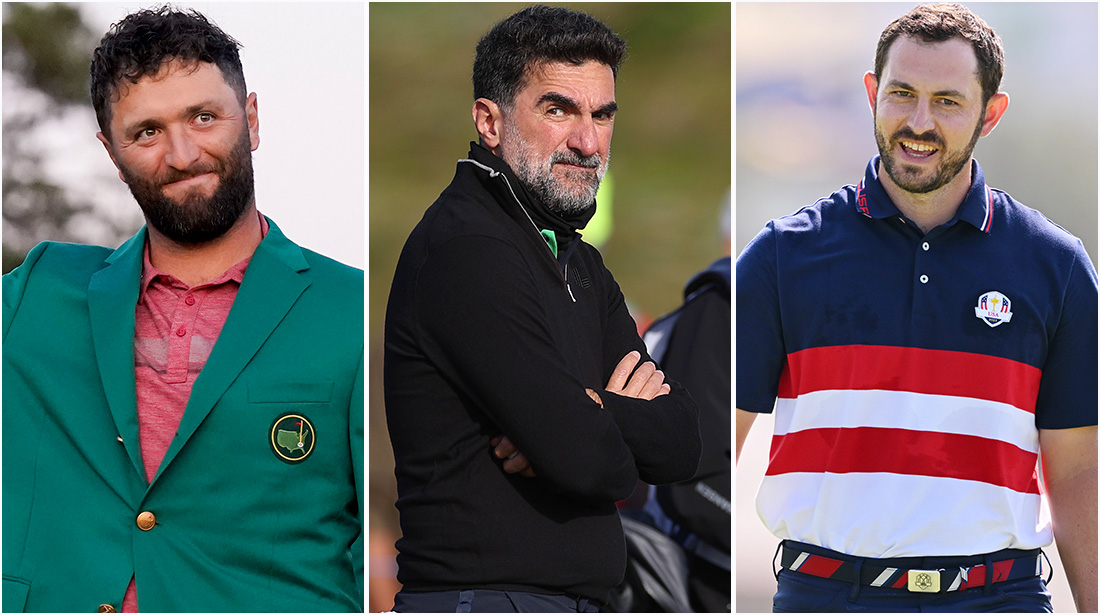PGA Tour at a Tipping Point: Jon Rahm Is Gone, a $1 Billion Compromise Was on the Table and Patrick Cantlay Is In Control
Whatever LIV Golf is paying Jon Rahm to leave the PGA Tour, it is an enormous number. Here is a larger one: Last summer, after the PGA Tour and Saudi Arabia’s Public Investment Fund announced their framework agreement, PIF indicated a willingness to fund a $1 billion equalization pool for the PGA Tour players who turned down LIV offers before the framework agreement, people familiar with the discussions tell Sports Illustrated. The number wasn’t final; nothing was final, obviously. But that’s where this was headed: A $1 billion-dollar equalization pool on top of a $2 billion PIF investment in the PGA Tour.
The numbers could have gone down—but they also could have gone up.
What has happened since should outrage the Tour’s rank and file. It is a story of political maneuvering and bruised egos obstructing common sense, with Patrick Cantlay seizing control and somehow turning himself into arguably the most powerful person on the PGA Tour, including the commissioner. Cantlay has formed an alliance with fellow Tour Policy Board members Tiger Woods and Jordan Spieth, and that group, along with Colin Neville of Raine Capital, is now driving the Tour’s negotiations with PIF and other investors.
How is that going? Well, multiple sources tell SI that Neville assured bidders no players from the Tour’s much-discussed meeting in Delaware in August 2022 would defect to LIV. Rahm was in Delaware, he might be the best player in the world, and he just left. What are those bidders supposed to think now? (A spokesperson for Raine declined comment on behalf of Neville.)
There is still the possibility this all ends happily for everybody, but the Tour is in a worse negotiating position than it was this summer, with no clear endgame in sight. Rahm’s departure is not just a blow to the Tour; it is the strongest public indicator yet of how poorly the ship has been steered.

Go back to the framework announcement in June. The rollout was a disaster, but the principles of the agreement were clear: PIF would invest in the Tour. PIF chairperson Yasir Al-Rumayyan would be chairperson and get a seat on the PGA Tour Policy Board—but the PGA Tour commissioner would get to decide the fate of the Tour and LIV. LIV agreed to drop all lawsuits against the Tour with prejudice.
Less noticed at the time: While the sides set Dec. 31 of this year as a target to complete the deal, there was no exclusivity window. The PGA Tour was free to talk to any and all other investors while it negotiated with PIF. One attorney who has worked on mergers and acquisitions for decades and had no connection to this deal told SI that was extremely unusual: Normally, “once it’s public, you’re locked into the deal until either the deadline for closing passes or some condition that can’t be met.” Another attorney with a similar background concurred.
Attorneys pointed out that in most mergers and acquisitions, the deal does not become public until it is close to finalized, with most details agreed upon. The Tour and LIV announced their plans publicly early in the process because the Tour needed players to digest the news and then help shape the final agreement.
The framework agreement also included a clause in which LIV and the Tour agreed not to poach each other’s players as they negotiated. This meant that the Tour could solicit bids from other investors, and LIV could not retaliate by—just for example here—throwing a half-billion or so dollars at Jon Rahm.
There were indications the Justice Department might view the no-poaching agreement as an antitrust violation, and so as a show of good faith, the Tour and LIV removed it. But the rest of it remained. Al-Rumayyan had been very clear that he wanted it to go through.
The Tour had a chance to use the nonexclusivity to either find other investors—lowering PIF’s stake and possibly clapping back at critics who said the Saudis would run the Tour—or simply use the possibility of it to get the best possible deal from PIF. That is also a critical point: The sides had not yet agreed on what the Tour and its assets were worth. Would a $2 billion investment buy 20 percent? Fifty percent? Ten percent? It would be whatever both sides thought it was. The last three years in sports have taught us that the Saudis do not worry about the numbers after the decimal point.
So what happened? Players were angry about being blindsided. Cantlay—who had conversations with LIV while on the policy board, then downplayed them privately when they became public—used the anger to seize control.
The players received an extra seat to the Policy Board, giving them six; independent directors have five. Woods got that seat. By the end of the year, Rory McIlroy resigned from the board, “citing personal and professional commitments.” McIlroy had sparred repeatedly with Cantlay over the future of the Tour; McIlroy was adamant about the need to spread the wealth throughout the Tour, and Cantlay seemed more concerned about catering to elite golfers like himself. (Cantlay’s agent, Jordan Lewites, declined a request to talk to SI.)
McIlroy was replaced by Jordan Spieth. So effectively, the Policy Board went from one player advocating for stars—Cantlay—to three: Cantlay, Woods and Spieth. (Representatives for Woods, Spieth and McIlroy did not immediately respond to requests to comment.)
That group is driving negotiations. There are some major problems with that. One is that, while Cantlay, Woods and Spieth are ostensibly making sure players have a voice, they have an obvious conflict of interest—any arrangement that prioritizes stars enriches them. Another problem is that Patrick Cantlay is simply not qualified to drive a negotiation like this. He does have assistance from Neville and Raine Capital, but Raine was not involved until this summer, which raises the question: Who is listening to whom?
Now, back to Rahm. The question is not: “What does Rahm’s departure mean for LIV?” It is: “Why is this offer even there?” If the sides had been working to complete a deal, PIF would not need to throw so much money at Rahm. Yes, you can argue this turned out great for Rahm and his next 100 generations of descendants. But the Tour appears to be right back where it was a year ago—with LIV Golf luring stars with enormous offers and posing an existential threat to the PGA Tour.
There is, of course, a moral and ethical argument against taking PIF money. But there is no indication that is what is driving this. This is about Monahan leaving players out of the loop, players being understandably angry, and Cantlay taking advantage of it. Monahan’s job has been in jeopardy for months now; he acknowledged this summer he had to work to regain the players’ trust. He surely knows that if he loses the stars, his gig is up.
So what now? The players on the Policy Board released a letter of solidarity. But with six seats on an 11-person board, they can’t risk a single defection. How can Cantlay explain to his fellow players that they were on track for a $1 billion equalization pool, and instead, Jon Rahm is getting roughly half of that for himself? PIF has the money to subsidize that pool and a $2 billion investment anyway. But if Al-Rumayyan thinks he is nearing a deal, why would he sign Rahm?
The Dec. 31 target date is coming up fast. With Rahm gone, the Tour now has a diminished product to pitch to investors. If it all blows up, Monahan will be out of a job, Tiger and Spieth will still be stars, Cantlay can go to LIV—and the rest of the Tour will be left wondering how they let this happen.
